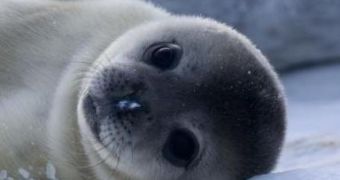Starting with September 2011, marine biologists in New England were appalled to find that ever more often mature and baby seals were showing up dead or in very poor health conditions on the coastline spreading from southern Maine to northern Massachusetts.
Thus, in just three months, a total of 162 suffering seals were found washed ashore in this region.
Naturally, specialists got to work as soon as possible, trying to determine what caused these marine mammals to become sick and eventually die, most often of pneumonia.
The results of their study, published in mBio, indicate that a novel avian influenza virus is to blame for these tragic deaths. Apparently, this type of avian flu somehow developed a new strain, capable of infecting not just birds, but also mammals.
EurekAlert informs us that, in one of his most recent interviews, Simon Anthony from the Center for Infection and Immunity, explained how, “When initial tests revealed an avian influenza virus, we asked the obvious question: how did this virus jump from birds to seals?”
Further tests revealed that, as a result of genetic mutations, H3N8's new strain is able to bind the sialic acid receptors located within these mammals' respiratory systems, therefore making it difficult – if not impossible – for them to breathe.
Concerns are now raised whether or not the people living in this area need also worry about their health, especially given the fact that several avian influenza viruses are known to have infected humans in the past.
Epidemiology specialist John Snow makes a case of how, “HIV/AIDS, SARS, West Nile, Nipah and influenza are all examples of emerging infectious diseases that originated in animals. Any outbreak of disease in domestic animals or wildlife, while an immediate threat to wildlife conservation, must also be considered potentially hazardous to humans.”
Hopefully, with proper wildlife surveillance in place, no humans will be affected by this newly-found virus strain.

 14 DAY TRIAL //
14 DAY TRIAL //